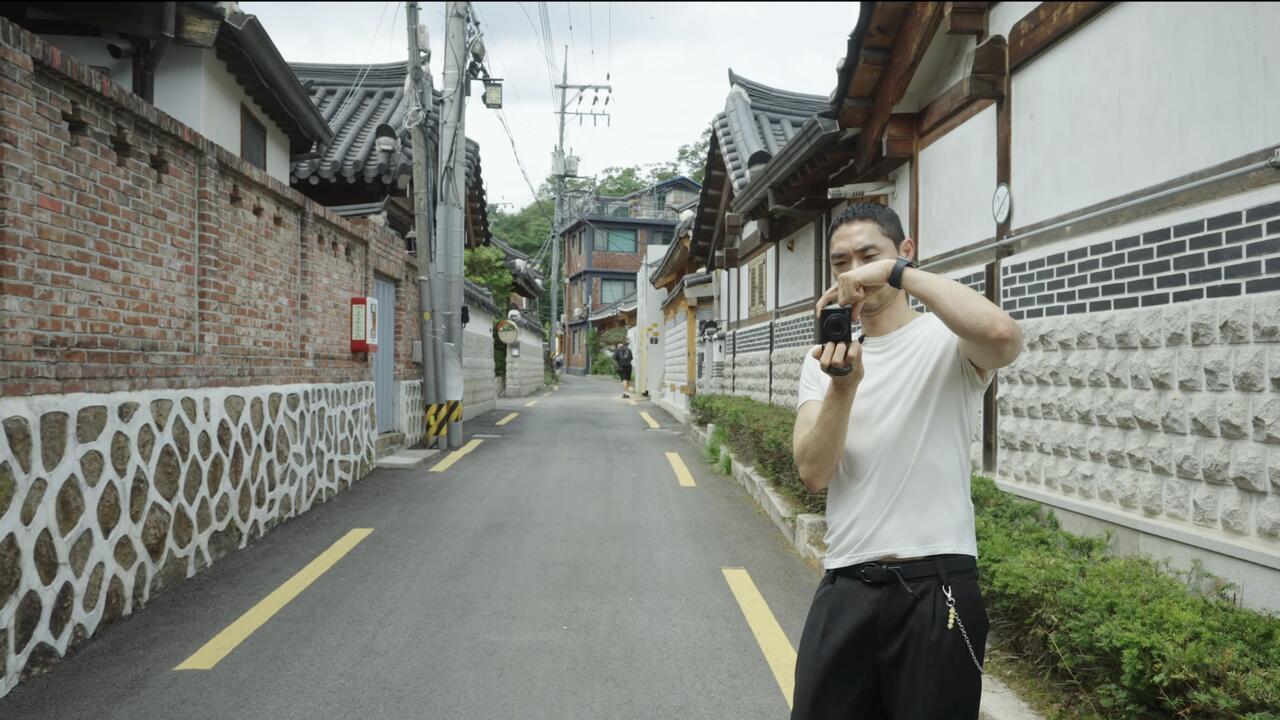Jeff Wall

Looking at a Jeff Wall photograph is like looking at a Jeff Wall photograph. I think you know what I mean. A work by Wall doesn’t look like the world represented by an artist; it looks like a world that has surrendered to the artist, to look exactly the way he wants it.
Since 1978 the Canadian artist has established an unmistakable, impenetrable visual language. It’s not just his signature light-boxes that give it away; even in reproductions his discomfiting style distinguishes itself, like a language we can identify but can’t comprehend. The ‘Jeff Wall effect’ is so palpable that we find ourselves translating our daily encounters into his language to describe them. It is this sense of total recognition, but partial knowledge, that Wall has traded on for 25 years.
The current show at the Schaulager in Basel is the largest retrospective of the artist’s work to date – an impressively thorough curatorial effort including 74 of his 120 works. The show opens with Wall’s earliest photos from the late 1970s, which are also some of his most iconic. While these works hint at how his aesthetic developed, some themes, such as self-portraiture in Double Self-Portrait (1979) and Picture for Women (1979), are quickly retracted.
The next room turns to panoramic landscapes, and we look for an obscure detail that might give us a clue to a hidden meaning but wind up with the familiar feeling that there is something we are missing. But as the exhibition progresses, we tend to look for the Walls we recognize: tense portraits and tenuous genre scenes, such as the man who refuses to glance at a woman in a fur coat in No (1983) or the suspicious handshake in The Agreement (1987).
But throughout the show well-known works are punctuated by rarely seen ones, so that we never get a firm grasp on where he’s leading us. His oeuvre begins to look as elusive as a single photograph – a collection of formally precise but thematically obscure moments. It even seems as though the artist has carefully planted red herrings, such as his black and white photographs taken in the mid-1990s, which in contrast, look parched and switched off.
The basic vocabulary of Wall’s language emerges through a few recurring themes, the most surprisingly consistent of which is that of class. He repeatedly depicts encounters between social classes, which appear dangerous at worst and uncomfortable at best. His style resembles reportage but never gives away a definitive political stance. His subjects are signifiers of a social status, employed to signal the idea of class, as if in a genre painting.
Wall repeatedly pictures rejected or isolated men: itinerants such as the hobo in The Thinker (1986) or deviants like Doorpusher (1984), who elicit unease, even a mild fear. These subjects are often sited in neglected, inhospitable locations on the fringes of society – under a motorway fly-over or in an abandoned cul-de-sac. There is no comfort to be found here, but there is very often an implied danger – not a real threat, only a perceived or passing one.
Wall has repeatedly been called a ‘painter of modern life’. His Vancouver street scenes are essentially the same snapshots of life we get as pedestrians in a modern city: brief encounters that reveal nothing about what took place before or after that moment. The alienation created by these isolated events is reconstructed and translated into the experience of witnessing a photograph. Each work is an imitation of life, based on resemblances, expressions and inferences. Staged action takes the place of real action, and gestures function as ‘emblems’, as Wall calls them. His posing subjects adopt fixed expressions that, like the photographs themselves, reveal no more than they expose on the surface. Authenticity is eradicated as his subjects act out his constructions.
What remains is an authorial or formal authenticity, not an expressionistic one. Wall seems to adopt an attitude towards his subjects, but it is not a stance that could be mistaken for a subjective feeling. I expected an ‘unveiling’ of Wall – but instead I was left wondering: does this artist like the world he depicts? Does he feel emotional about his subject matter? Does he care deeply about a rain-filled suitcase or a man with a bloodied nose? Does he relate to his types or situations? Does he fear them, or pity them?
Skilfully the artist has controlled our knowledge of this too. His body of work is strategically edited and constructed to reveal exactly as much or as little as his individual works. This could be Wall’s greatest achievement. His fragmentary world is one engineered according to his own vision, but one we are always bound to misunderstand. His photographs jog our memories or trigger subconscious feelings, but these are only fleeting traces of knowledge or distant, unattainable versions of it.
















